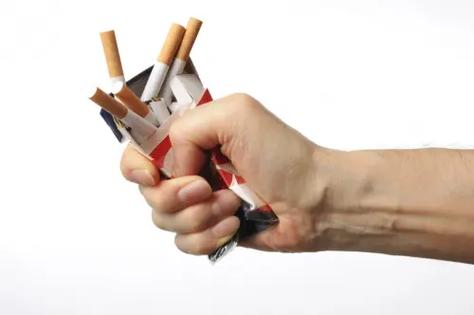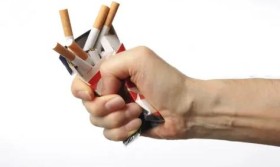Your Ultimate Guide to Selecting the Perfect Vape Tank Size for Travel
Packing for a trip is an art form. You meticulously plan your outfits, your chargers, and your itinerary. But for vapers, there's one crucial item that requires a bit more strategic thought: your vape tank. Choosing the right vape tank size for travel isn't just about convenience; it's about ensuring a smooth, hassle-free experience from takeoff to touchdown. A poorly chosen tank can lead to leaks in your bag, constant refilling, or running afoul of airline regulations. So, let's dive into the world of tank capacities, e-liquid consumption, and travel logistics to find your perfect on-the-go companion.
Understanding the Core Factors: Capacity, Consumption, and Convenience
The central question when selecting a travel vape tank is: "How much e-liquid do I need to carry to get me through my journey without constant maintenance?" The answer lies at the intersection of three key elements.
-
Tank Capacity and E-liquid Consumption: This is the most direct factor. Tank capacity is measured in milliliters (ml), typically ranging from 2ml standard tanks to 5ml or even 8ml for larger models. Your personal e-liquid consumption depends on your vaping style. Are you a direct-to-lung (DTL) vaper who enjoys big clouds and uses a low-nicotine, high-VG liquid? DTL vaping drains a tank much faster. Or are you a mouth-to-lung (MTL) vaper, simulating a cigarette draw with higher nicotine salt e-liquids, which typically consumes far less liquid? An MTL vaper might find a 2ml tank lasts all day, while a DTL vaper could empty a 4ml tank in a couple of hours.
-
Travel Duration and Refill Opportunities: Consider the length of your flight, layovers, and the ease of refilling during your trip. A short domestic flight might only require a single tank, whereas a long-haul international journey with multiple connections demands a different strategy. Ask yourself: Will I have the time and privacy to refill comfortably at the airport? Will I be able to easily purchase e-liquid at my destination?
-
Airline Regulations and TSA Guidelines: This is non-negotiable. The TSA and most international airlines have clear rules. All electronic devices and spare batteries must be in your carry-on luggage. E-liquids fall under the liquids rule: any containers carrying liquid must be 3.4 ounces (100ml) or less and all must fit into a single, clear, quart-sized bag. While your installed tank isn't subject to this bag, it's wise to ensure it's not overly full to prevent pressure changes from forcing leaks. Spare e-liquid bottles absolutely must comply with the 100ml limit and be in the liquids bag.
Breaking Down the Tank Size Options for Travelers
Let's look at the common tank sizes and evaluate their pros and cons for travel scenarios.
The Compact Performer: The 2ml Standard Tank
Often the default size for many starter kits and MTL devices, the 2ml tank has distinct travel advantages.
-
Pros:
- Leak-Resistance: Smaller tanks often have less air pressure to manage, making them slightly less prone to leaking during cabin pressure changes, especially if they have top-airflow design.
- Compliance: In some regions, 2ml is the legal maximum capacity for tanks, so you're always compliant.
- Portability: It keeps your device sleek and lightweight.
- Ideal for Nicotine Salts: Perfect for MTL vapers using high-nicotine salts, where a few puffs are satisfying and e-liquid consumption is minimal.
-
Cons:
- Frequent Refilling: For a DTL vaper or anyone on a long travel day, a 2ml tank will need constant attention. Fumbling with e-liquid bottles in a busy airport is nobody's idea of fun.
- Not for Long Journeys: If you have a long flight followed by a bus ride, a 2ml tank may not suffice.
The Sweet Spot for Most Travelers: The 3ml to 4.5ml Tank
This range is often considered the best vape tank capacity for mixed use. It strikes an excellent balance between capacity and portability.
-
Pros:
- Extended Use: A 4ml tank can comfortably last a DTL vaper through a few hours of travel and an MTL vaper for a significant portion of the day.
- Manageable Size: It doesn't make your device overly bulky.
- Reduced Refill Anxiety: You can step off a plane without immediately needing to search for a refill spot.
-
Cons:
- Potential for Leaks: Like any tank, a poor design or failure to manage pressure can lead to leaks. The key here is to choose a tank known for its leak-proof design for travel.
- May Still Require a Refill: On a very long travel day, even a 4.5ml tank might run dry.
The Long-Haul Champion: The 5ml+ "Plus" or "Bubble" Tank
These tanks feature a bulging glass section that dramatically increases capacity, often to 5ml, 6ml, or even 8ml. They are the solution for the heavy vaper or the traveler going off the grid.
-
Pros:
- Maximum Capacity: This is the ultimate choice for minimizing e-liquid refills during travel. You can easily get through a full day of intense travel without even thinking about your e-liquid bottle.
- Perfect for Remote Travel: If you're heading somewhere without easy access to vape shops, a large capacity tank is a lifesaver.
-
Cons:
- Bulk and Fragility: The bubble glass makes the tank larger and can be more prone to breaking if the device is dropped. This is a critical consideration for a device jostling in a bag.
- Increased Leak Potential: More liquid means a greater potential mess if a leak does occur.
- Less Discreet: The larger size is less pocket-friendly and more conspicuous.
Actionable Tips and Final Checklist for Your Travel Vape Setup

Knowing the sizes is one thing; creating a bulletproof plan is another. Here is your pre-travel vape checklist:
-
Choose the Right Tank for Your Style: Be honest about your consumption. If you're a light MTL vaper, a 2-3ml tank is perfect. If you're a cloud chaser, lean towards a 4.5ml or larger bubble glass tank.
-
Prioritize Top-Airflow Design: When shopping for a travel-friendly vape tank, the single most important feature (besides capacity) is the airflow design. Top-airflow tanks are far superior for travel because the air intake is located at the top of the tank. If liquid floods the coil chamber, it has nowhere to go but stay in the tank. Bottom-airflow tanks, while often providing slightly better flavor, are much more susceptible to leaking if laid on their side or due to pressure changes.
-
Manage Pressure Changes on Airplanes: Before your plane takes off, create a slight vacuum in your tank to prevent leaking. There are two simple methods:
- Close the Airflow: Turn your tank upside down after fully closing the airflow control ring. As the cabin pressure drops, the expanding air inside the tank will push out through the cotton, not the airflow holes.
- Empty Partially: Vape your tank down to about half-full before boarding. This gives the air inside plenty of room to expand without forcing e-liquid out.
-
Pack Smart:
- Carry-On is King: Your vape device, spare batteries (in a case!), and all e-liquids MUST be in your carry-on.
- Liquids Bag: Have your spare e-liquid bottles (100ml or less each) ready in a clear, quart-sized bag for security.
- Protect Your Tank: Empty your tank before packing it in a checked bag if you have a separate device, or better yet, keep everything with you. Use a small silicone band or a vape band to protect the glass from impacts.
- Bring Spares: Pack a spare coil and a pack of spare O-rings. A failing coil or a lost seal can ruin your trip.
Ultimately, the perfect vape tank for your next trip is the one that holds enough e-liquid to keep you satisfied without causing logistical headaches. By balancing capacity with consumption, prioritizing a leak-resistant design, and packing intelligently, you can ensure that your vaping experience remains a pleasure, no matter how far you roam. So, assess your needs, check your tank, and travel with confidence. Happy vaping and safe travels









